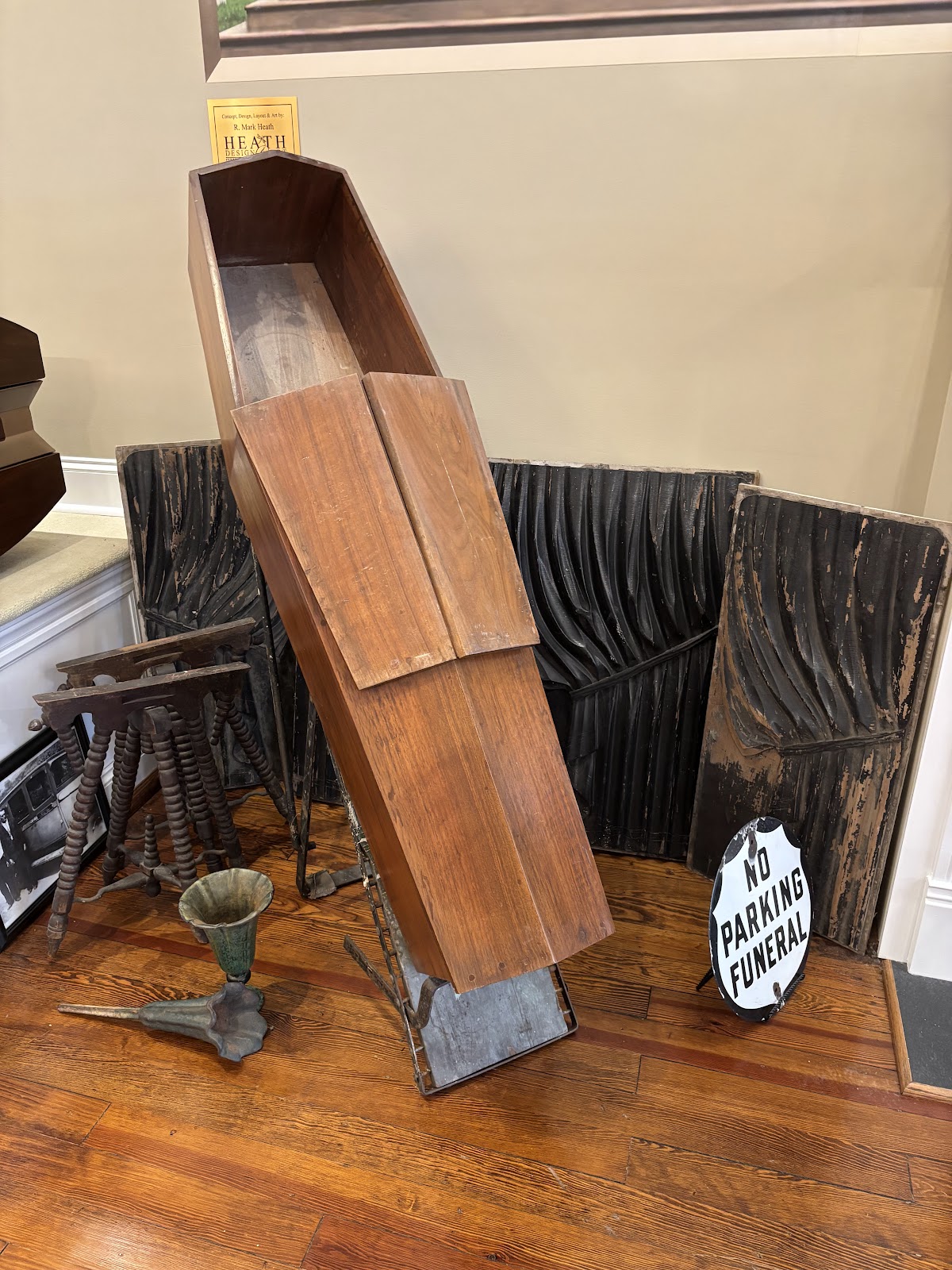
Last week, I took a deeply meaningful trip—three hours out and three hours back—to Chatham, Virginia, to visit a place that’s long held a top spot on my must-see list: the Simpson Funeral Museum.
Nestled in the very heart of town, this remarkable museum sits on the original site of Chatham’s first funeral home, established in the late 1800s. To walk through those doors is to step into the history of a profession that quietly shapes every community, every generation.
The centerpiece of this visit? Repository: Mummiforms—an extraordinary exhibit by Funetorium showcasing the largest collection of Fisk metallic burial cases ever brought together in one place. These cast iron, air-tight, anthropoid coffins—also known as “mummiforms” due to their distinctive shape were originally patented in the 1840s by Almond D. Fisk. They were designed to preserve the body longer, prevent the spread of disease, and allow loved ones to view the deceased through a glass plate set over the face. Their elegant, almost sarcophagus-like forms made them both functional and symbolically powerful.
What makes Repository: Mummiforms so significant is that it brought together more Fisk coffins than have been seen together since they were produced at the foundry over 170 years ago. For anyone passionate about early American funeral history, it was a once-in-a-lifetime experience, utterly surreal to be surrounded by such rare and storied artifacts.
For context, President Zachary Taylor, who died in 1850, was famously reinterred in a Fisk metallic coffin during a controversial exhumation in the 1990s adding presidential intrigue to an already fascinating legacy.
But the museum offered much more than just the Fisk exhibit. The Simpson Funeral Museum is a trove of mortuary treasures, from award-winning antique hearses (including an immaculate Packard by Henney, which had me beaming—my dad was a devoted Studebaker man, and I’ve always had a soft spot for Packards) to antique coffins, presidential-style caskets, and burial vaults that tell the story of how the American funeral evolved.
The museum also boasts a stunning collection of regalia, including mourning attire, funeral flags, and memorabilia from fraternal orders and funeral directors’ associations.
It was a privilege to witness this tribute in person.
And just when I thought the day couldn’t get any more surreal, someone recognized me—“Hey, you’re one of the writers from American Cemetery & Cremation! You wrote that Poe book, right?” It was a fleeting moment, but in the best way possible, I had my little mortuary nerd celebrity encounter.
For those who live and breathe the history, culture, and craft of funeral service, a visit to the Simpson Funeral Museum isn’t just educational—it’s deeply personal. A pilgrimage, really. One I won’t forget.





No comments:
Post a Comment